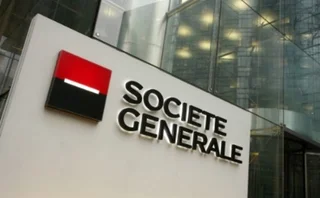
Malaysia's CLO debut
The first Malaysian synthetic collateralised loan obligation finally launched last month following an 18-month delay. But the market may not have long to wait for follow-up deals as more Malaysian banks explore similar transactions. Hardeep Dhillon reports

The first steps towards the inception of a Malaysian synthetic securitisation market began in June 2005 when national mortgage corporation Cagamas mandated two consortia to structure synthetic collateralised loan obligation (CLO) transactions backed by small and medium-sized enterprise (SME) loans. A deal lead-managed by Aseambankers and Citi was to be launched in the first quarter of 2006, with a second arranged by Deutsche Bank and Singapore's Overseas Chinese Banking Corporation (OCBC) Bank possibly to follow after its completion.
The first deal was delayed by several months as market participants were keen to ensure a successful inaugural transaction, which took place on May 22. "With all new products and product developments, there are a lot of building blocks to put in place," says John Chong, head of debt markets at Aseambankers in Kuala Lumpur, adding that there were numerous discussions with authorities, potential originators, investors and rating agencies.
Patrick Khoo, head of securitisation and structured finance at CIMB Investment Bank in Kuala Lumpur, echoes these views, saying the first deals in any new market are always the most difficult, as they require a lengthy and time-consuming process dealing with regulators to ensure they are comfortable with the products.
The deal, a 600 million ringgit (Rm) ($176 million) securitisation of SME loans originated by Maybank, is the first synthetic CLO to tap SME loans in southeast Asia, says Kalwant Singh, Aseambankers' head of asset-backed securitisation in Kuala Lumpur. The deal was launched under the Securities Commission's Guidelines on the Offering of Structured Products, which cover all derivatives transactions and were revised in April.
"The securitisation of SME loans as an asset class is not only another milestone for Cagamas, it is also a breakthrough for the Malaysian capital market and financial system," says Cagamas president and chief executive Steven Choy in Kuala Lumpur. "This programme has set a new standard in the country, and at the same time positioned Malaysia as a model for SME funding."
The partially funded synthetic securitisation involves the transfer of credit risk from Maybank's SME loans portfolio to the capital markets via Cagamas SME, a Cagamas subsidiary. Cagamas is the transaction administrator and senior swap counterparty, retaining 60%, or Rm360 million, of the super-senior risk through a credit default swap. Maybank will make regular payments to Cagamas SME to buy protection against the occurrence of credit events.
Cagamas SME will use the proceeds from the issuance of the notes to invest in cash deposit accounts and Malaysian government securities. In the event of a claim, Maybank does not have to go to the investors to obtain the funds, as the funds are already sitting in credit for the bank to call upon, says Chong. Interest income from these investments, along with the premium payments received from Maybank, will be used to make coupon payments on the notes.
Maybank retains the 5% first-loss piece and Credit Guarantee Corporation (CGC) has invested in the 10% mezzanine tranche and Class C Rm45 million credit-linked notes. Retaining the first loss and mezzanine tranches provides credit enhancement to the transaction, says Aseambankers' Singh. He adds that CGC's guarantee enables SMEs to tap into the capital market rather than apply for direct funding. The Class A Rm75 million and Class B Rm30 million notes will be offered to capital market investors, and bankers believe the lead managers have marketed these tranches to insurance companies.
Beneficial for SMEs
"The transaction is an important development in the Malaysian capital markets and will be very beneficial for the SME and banking sectors," says Chong. "The whole objective of doing this synthetic securitisation was to develop and build our SME sector and the role of investment banks in providing competitive sources of funding."
The deal will free up capital so that banks can increase lending to the SME sector. The transaction transfers credit risk for potential capital relief for originating banks, improves return on capital and will allow Malaysian banks to better manage their SME risk.
SMEs play an important role in the Malaysian economy and are seen as the engine for further growth, says Singh. The SMEs may be small borrowers, but they account for 32% of Malaysia's gross domestic product, contribute 19% of exports and create 56% of total employment in Malaysia.
Baljeet Kaur Grewal, chief economist and head of research at Kuwait Finance House (KFH) in Kuala Lumpur, believes that at a time when domestic and international liquidity remains abundant - Asian liquidity excluding Japan stands at $1.3 trillion, says KFH - the issue is timely and will receive good investor response. Coupled with a favourable Malaysian sovereign outlook, the underlying credit quality of the SME sector as a whole is enhanced, as is the availability of funding, she says.
"The first deal most definitely represents a significant development in the evolutionary process of Malaysia's securitised market," says Grewal. "Outstanding domestic securitisation paper now only accounts for a diminutive fraction of total bonds in Malaysia. As such, the size of the deal, as well as the potential investors it will bring, represents a milestone in itself."
There are other Malaysian banks with large SME portfolios that are closely looking to follow the model and launch similar structures, says Cagamas, and Aseambankers' Singh agrees. "This is a landmark transaction, and now this is in place, it will be a lot easier for other banks to do," he says.
Potential for further deals
The potential for other Malaysian banks to become involved is high, and further issuance is expected, as bankers state that many, if not all, of the top five local banks are either working on deals or actively exploring the market's possibilities. "The product is definitely getting a lot of attention from local banks looking at the key benefits they can gain from a synthetic CLO," says one Malaysian banker.
Market participants say news on the second deal involving Deutsche Bank and OCBC is scant, with some suggesting this deal may have been dropped altogether. Nonetheless, another deal referencing SME loans is understood to be in the pipeline, with CIMB acting as lead manager and two non-Malaysian banks as arrangers.
One banker close to the deal says CIMB first began working on its balance-sheet synthetic SME CLO at the start of the year and he expects a launch in the next four to six months. The partner banks were expected to be mandated at the end of May and the involved parties are working towards finalising the terms of the deal. "We are optimistic that the transaction will go smoothly, as we have good advisers and we all want to ensure this deal is executed in a timely and satisfactory manner," says the unnamed banker. "The deal will be structured as a credit-linked note under the Securities Commission's Guidelines on the Offering of Structured Products."
The rationale for targeting SME loans is that since CIMB, like many of its Malaysian peers, is heavily involved in SME lending, a synthetic SME CLO transaction would allow the bank to free up lending lines and increase its capacity to provide financing to the sector. "One of the ways for the bank to achieve this, and ensure SME exposures on the balance sheets do not become too large, is to offer the risk to buyers of synthetic CLOs," says the banking source. "The transaction is in unfunded form, and we are doing it mainly to maximise our risk management and capital management exposure."
An increasing number of firms are looking at other ways to enhance the profile of the SME sector and, in particular, the issuance of SME CLOs or SME asset-backed securities (ABSs) into the capital market. Whether deals are funded or unfunded would then be dependent on the objective of each originator, says the banker.
CIMB's Khoo says greater focus will be paid to synthetic securitisations as Malaysian banks become increasingly sensitive to their capital management requirements. "A synthetic CLO is one instrument banks could use to enhance return on equity and improve the profile of their balance sheets and credit exposures," he says.
While synthetic deals and CDS are relatively new concepts for Malaysia, the learning curve among financial institutions and the investor base is growing. The asset classes of ABS, residential and commercial mortgage-backed securities, CLOs and collateralised debt obligations are starting to gain greater traction and increasing attention from investors, says Khoo.
The Malaysian banker says: "We understand the concept and would like to promote it more actively in Malaysia. The CDS is a good instrument to use as a hedge and to improve liquidity."
Aseambankers' Chong says Malaysian investors have become accustomed to cash-based asset-backed transactions and that understanding the synthetic structure did not take long.
In addition to providing capital relief for the lenders, there are other advantages of synthetic transactions, say bankers - for instance, they can be cheaper than funded transactions. Such deals also do not have to deal with certain legal issues, such as transfer and assignment, sovereign interference and currency risk, as there is no funds transfer.
Warren Lee, head of ABS for Asia at Standard Chartered in Hong Kong, says synthetic securitisation would favour those banks that are cash-rich and may want to improve their capital ratio, or the larger Malaysian banks that may want to diversify their portfolio risk.
Bankers also feel the onset of Basel II will be a driver of the synthetic market. The standardised approach comes into force in 2008 in Malaysia, and the advanced internal ratings-based approach in 2010. CIMB's Khoo says: "Basel II will spark even more interest from banks to manage their capital positions, and as banks become more sensitive to this, the synthetic CLO will become a means to transfer risks to the capital markets or other counterparties."
Standard Chartered's Lee adds: "The synthetic structure should be very good for banks to deal with Basel II requirements. The first deal is a giant step for the market, and we now have three Asian countries - Hong Kong, Malaysia and Singapore - with synthetic securitisation markets."
Only users who have a paid subscription or are part of a corporate subscription are able to print or copy content.
To access these options, along with all other subscription benefits, please contact info@risk.net or view our subscription options here: http://subscriptions.risk.net/subscribe
You are currently unable to print this content. Please contact info@risk.net to find out more.
You are currently unable to copy this content. Please contact info@risk.net to find out more.
Copyright Infopro Digital Limited. All rights reserved.
As outlined in our terms and conditions, https://www.infopro-digital.com/terms-and-conditions/subscriptions/ (point 2.4), printing is limited to a single copy.
If you would like to purchase additional rights please email info@risk.net
Copyright Infopro Digital Limited. All rights reserved.
You may share this content using our article tools. As outlined in our terms and conditions, https://www.infopro-digital.com/terms-and-conditions/subscriptions/ (clause 2.4), an Authorised User may only make one copy of the materials for their own personal use. You must also comply with the restrictions in clause 2.5.
If you would like to purchase additional rights please email info@risk.net
More on Securitisation
Global banks look for profits in China ABS market
Regulatory change provides opportunity for international firms' structuring skills
Credit fears hold back US solar securitisation deals
SolarCity deals show potential and pitfalls of new asset class
Collateral damage: Capital proposals threaten Europe's ABS market
Insecuritisation
Securitisation touted as answer to '€4 trillion' funding gap
Securitisation industry group claims Europe faces big financing shortfall – and pushes securitisation as the answer
SG plans to securitise €1.9 billion of derivatives exposure
Deal is said to pay a coupon of 11% for first-loss protection – which some investors say is too low
"Deceptive and negligent": How the first CPDO got its AAA rating
An extraordinary Australian court judgement shines a light on the errors and deceit that led to the granting of an AAA rating to ABN Amro’s Surf constant proportion debt obligation in 2006. Lukas Becker reports
Dutch counsel confident of success as S&P faces new CPDO case
The fine handed out by an Australian court last year to ABN Amro and Standard & Poor’s was a rare success for post-crisis litigants in structured credit cases. The victors are hoping to repeat the trick in Europe – but what are their chances? Lukas…






